Explain Eolian
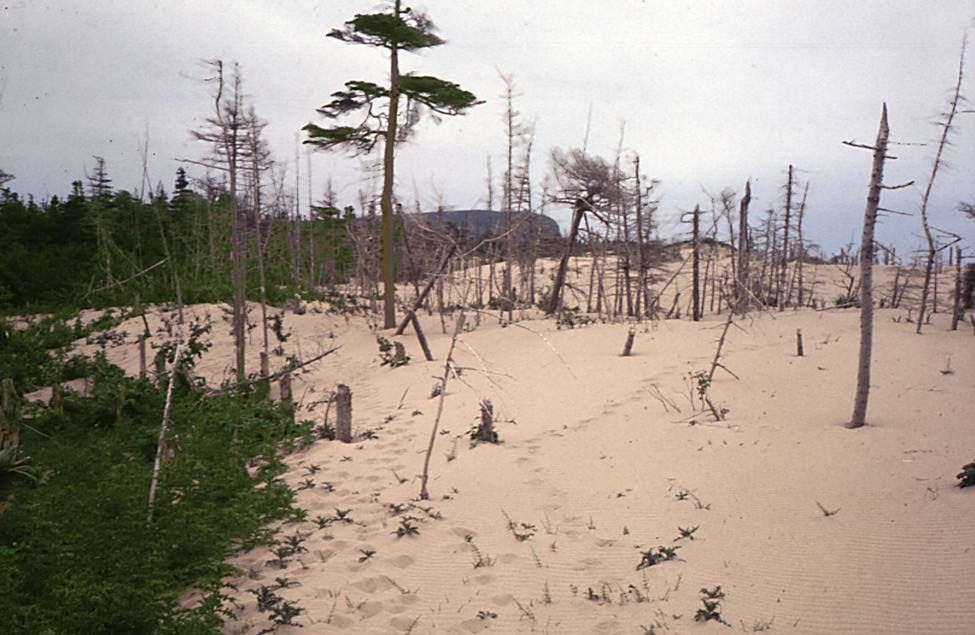
Eolian Technical Terms
Eolian: Pertaining to material transported and deposited (eolian deposit) by the wind. Includes clastic materials such as dune sands, sand sheets, loess deposits, and clay (e.g. parna). HP
Discover Eolian Deposit

Eolian Deposit Technical Terms
Eolian Deposit: Sand, silt or clay-sized clastic material transported and deposited primarily by wind, commonly in the form of a dune or a sheet of sand or loess. Conventionally, primary volcanic deposits (e.g. tephra) are handled separately. Compare – loess, parna, beach sands. SW
Explain Eolian Sands
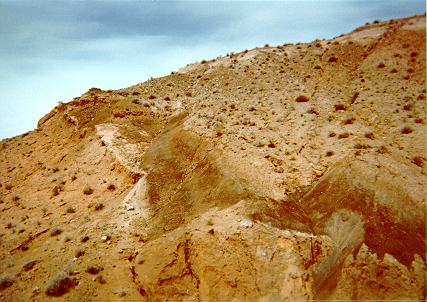
Eolian Sands Technical Terms
Eolian Sands: Sand-sized, clastic material transported and deposited primarily by wind, commonly in the form of a dune or a sand sheet. Compare - beach sands. SW
Explain Ephemeral Stream
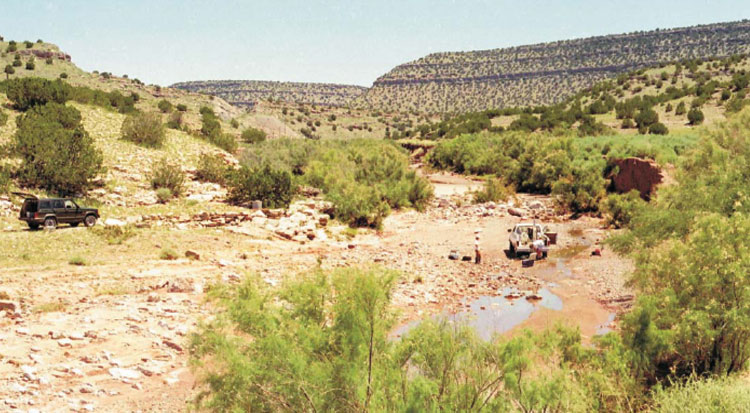
Ephemeral Stream Technical Terms
Ephemeral Stream: Generally a small stream, or upper reach of a stream, that flows only in direct response to precipitation. It receives no protracted water supply from melting snow or other sources and its channel is above the water table at all times. Compare – arroyo, intermittent stream, perennial stream. HP
Discover Epiclastic

Epiclastic Technical Terms
Epiclastic: Pertaining to any clastic rock or sediment other than pyroclastic. Constituent fragments are derived by weathering and erosion rather than by direct volcanic processes. Compare - pyroclastic, volcaniclastic, clastic, detritus. HP
Remember Eroded Fan Remnant

Eroded Fan Remnant Technical Terms
Eroded Fan Remnant: All, or a portion of an alluvial fan that is much more extensively eroded and dissected than a fan remnant; sometimes called an erosional fan remnant (FFP). It consists primarily of a) eroded and highly dissected sides (eroded fan-remnant sideslopes) dominated by hillslope positions (shoulder, backslope, etc.), and b) to a lesser extent an intact, relatively planar, relict alluvial fan “summit” area best described as a tread. SW & FFP
Remember Eroded Fan-Remnant Sideslope

Eroded Fan-Remnant Sideslope Technical Terms
Eroded Fan-Remnant Sideslope: A rough or broken margin of an eroded fan remnant highly dissected by ravines and gullies that can be just a fringe or make up a large part of an eroded alluvial fan; its bounding escarpments (risers), originally formed by inset channels, have become highly dissected and irregular such that terrace components (tread and riser) have been consumed or modified and replaced by hillslope positions and components (shoulder, backslope, footslope, etc.); sometimes referred to as fan remnant sideslopes (FFP). Compare – eroded fan remnant. SW & FFP
Expose Erosion

Erosion Technical Terms
Erosion: The wearing away of the land surface by running water, waves, or moving ice and wind, or by such processes as mass wasting and corrosion (solution and other chemical processes). The term "geologic erosion" refers to natural erosion processes occurring over long (geologic) time spans. "Accelerated erosion" generically refers to erosion in excess of what is presumed or estimated to be naturally occurring levels, and which is a direct result of human activities (e.g. cultivation, logging, etc.). SW & HP
Explain Erosional

Erosional Technical Terms
Erosional: Owing its origin, form, position or general character to degradational processes by water, wind, ice or gravity. Compare - constructional. HP
Discover Erosion Remnant

Erosion Remnant Technical Terms
Erosion Remnant: A topographic feature that remains or is left standing above the general land surface after erosion has reduced the surrounding area; e.g., a monadnock, a butte, or a stack. GG
Explain Erratic

Erratic Technical Terms
Erratic: A rock fragment carried by glacial ice, or by floating ice (ice-rafting), and subsequently deposited at some distance from the outcrop from which it was derived, and generally, though not necessarily, resting on bedrock or sediments of different lithology. Coarse fragments range in size from a pebble to a house-size block. GG
Remember Escarpment

Escarpment Technical Terms
Escarpment: A relatively continuous and steep slope or cliff produced by erosion or faulting and that topographically interrupts or breaks the general continuity of more gently sloping land surfaces . The term is most commonly applied to cliffs produced by differential erosion. Synonym: "scarp." SW & HP
Discover Esker
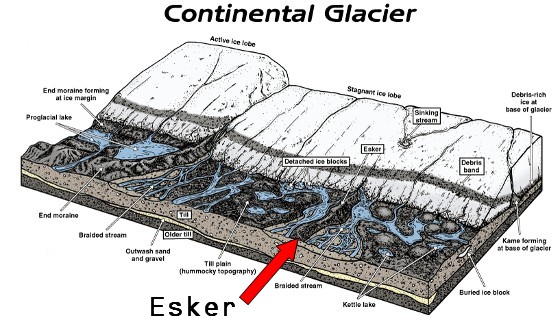
Esker Technical Terms
Esker: A long, narrow, sinuous and steep-sided ridge composed of irregularly stratified sand and gravel deposited as the bed of a stream flowing in an ice tunnel within or below the ice (subglacial) or between ice walls on top of the ice of a wasting glacier, and left behind as high ground when the ice melted. Eskers range in length from less than a kilometer to more than 160 kilometers, and in height from 3 to 30 meters. Compare - kame, crevasse filling, glaciofluvial deposits, outwash. SW
Remember Estuarine Deposit

Estuarine Deposit Technical Terms
Estuarine Deposit: Fine-grained sediments (very fine sand, silt and clay) of marine and fluvial origin commonly containing decomposed organic matter, laid down in the brackish waters of an estuary; characteristically finer sediments than deltaic deposits. Compare – fluviomarine deposit, lacustrine deposit, lagoonal deposit, marine deposit, overbank deposit. GG
Discover Estuarine Subaqueous Soils
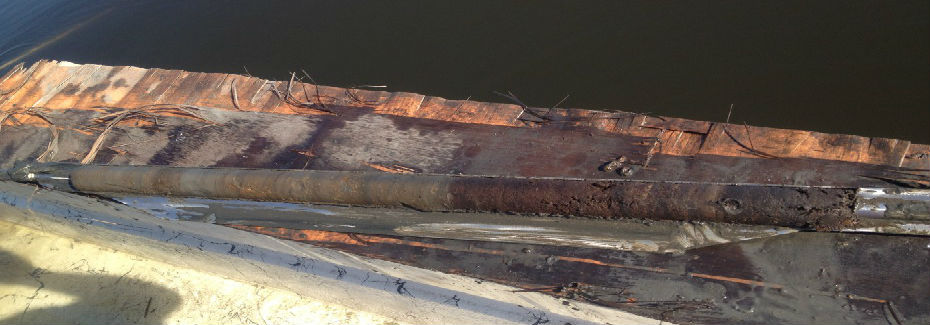
Estuarine Subaqueous Soils Technical Terms
Estuarine Subaqueous Soils: Soils that form in sediment found in shallow-subtidal environments in protected estuarine coves, bays, inlets, and lagoons. Excluded from the definition of these soils are any areas “permanently covered by water too deep (typically greater than 2.5 m) for the growth of rooted plants”. SSS
Explain Estuary

Estuary Technical Terms
Estuary: A seaward end or the widened funnel-shaped tidal mouth of a river valley where fresh water comes into contact with seawater and where tidal effects are evident; e.g., a tidal river, or a partially enclosed coastal body of water where the tide meets the current of a stream. (b) A portion of an ocean or an arm of the sea affected by fresh water. (c) A drowned river mouth formed by the subsidence of land near the coast or by the drowning of the lower portion of a non-glacial valley due to the rise of sea level. Compare – lagoon. GG
Expose Everglades

Everglades Technical Terms
Everglades: A large expanse of marshy land, covered mostly by grasses, e.g. the Florida Everglades. GG
Explain Exfoliation

Exfoliation Technical Terms
Exfoliation: The process by which concentric scales, plates, or shells of rock, from less than a centimeter to several meters in thickness, are successively spalled or stripped from the bare surface of a large rock mass. It often results in a rounded rock mass or dome-shaped hill. GG
Remember Exhumed

Exhumed Technical Terms
Exhumed: Formerly buried landforms, geomorphic surfaces, or paleosols that have been re-exposed by erosion of the covering mantle. Compare - relict, buried, ground soil. HP
Remember Extrusive

Extrusive Technical Terms
Extrusive: Said of igneous rocks and sediments derived from deep-seated molten matter (magmas), deposited and cooled on the earth's surface (e.g. including lava flows and tephra deposits). Compare - intrusive, volcanic. HP
Explain Faceted Spur

Faceted Spur Technical Terms
Faceted Spur: The inverted V-shaped end of a ridge that has been truncated or steeply beveled by steam erosion (e.g. meander scar or bluff), glacial truncation, or fault scarp displacement. Compare - spur. SW
Explain Facies

Facies Technical Terms
Facies: A distinctive group of characteristics that distinguish one group from another within a stratigraphic unit; the sum of all primary lithologic and paleontological characteristics of sediments or sedimentary rock that are used to infer its origin and environment; the general nature of appearance of sediments or sedimentary rock produced under a given set of conditions; e.g.: contrasting river-channel facies and overbank-flood-plain facies in alluvial valley fills. HP
Remember Fall

Fall Technical Terms
Fall: (a) A category of mass movement processes, associated sediments (fall deposit), or resultant landforms (e.g., rock fall, debris fall, soil fall) characterized by very rapid movement of a mass of rock or earth that travels mostly through the air by free fall, leaping, bounding, or rolling, with little or no interaction between one moving unit and another. Compare – topple, slide, lateral spread, flow, complex landslide, landslide. SW & DV; (b) The mass of material moved by a fall. GG
Explain Falling Dune

Falling Dune Technical Terms
Falling Dune: An accumulation of sand that is formed as sand is blown off a mesa top or over a cliff face or steep slope, forming a solid wall, sloping at the angle of repose of dry sand, or a fan extending downward from a re-entrant in the mesa wall. Compare – climbing dune, sand ramp. GG
Expose Fall Line
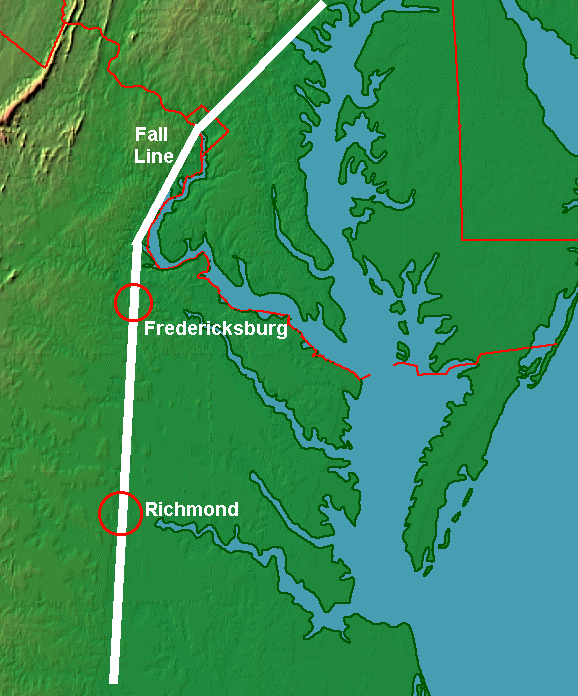
Fall Line Technical Terms
Fall Line: An imaginary line or narrow zone connecting the water falls on several adjacent or near-parallel rivers, marking the points where these rivers make a sudden descent from an upland to a lowland, as at the edge of a plateau; specifically, the Fall Line marking the boundaries between the ancient, resistant crystalline rocks of the Piedmont Plateau and the younger, softer sediments of the Atlantic Coastal Plain of the Eastern United States. It also marks the limit of navigability of the rivers. Now considered an archaic term because Coastal Plain materials occur several miles west or inland of the Fall Line and current research is showing it to be a broad zone of high-angle reverse faults. GG
Explain Fan

Fan Technical Terms
Fan: A gently sloping, fan-shaped mass of detritus forming a section of a low-angle cone commonly at a place where there is a notable decrease in gradient; specifically an alluvial fan (not preferred – use alluvial fan). Compare – alluvial fan, alluvial cone. (b) A fan-shaped mass of congealed lava that formed on a steep slope by the continually changing direction of flow. GG
Remember Fan Collar

Fan Collar Technical Terms
Fan Collar: A landform comprised of a thin, short, relatively young mantle of alluvium along the very upper margin (near the proximal end or apex) of a major alluvial fan. The young mantle somewhere buries an older soil that can be traced to the edge of the collar where the older soil emerges at the land surface as a relict soil. Compare – fan apron. FFP
Expose Fanglomerate

Fanglomerate Technical Terms
Fanglomerate: A sedimentary rock consisting of waterworn, heterogeneous fragments of all sizes, deposited in an alluvial fan and later cemented into a firm rock. GG
Remember Fanglomerate

Fanglomerate Technical Terms
Fanglomerate: A sedimentary rock consisting of waterworn, heterogeneous fragments of all sizes, deposited in an alluvial fan and later cemented into a firm rock. GG
Discover Fan Piedmont

Fan Piedmont Technical Terms
Fan Piedmont: The most extensive landform on piedmont slopes, formed by (a) the lateral, downslope, coalescence of mountain-front alluvial fans into one generally smooth slope with or without the transverse undulations of the semi-conical alluvial fans, and (b) accretions of fan aprons. FFP
Expose Fan Remnant

Fan Remnant Technical Terms
Fan Remnant: A general term for landforms that are the remaining parts of older fan-landforms, such as alluvial fans, fan aprons, inset fans, and fan skirts, that either have been dissected (erosional fan-remnants) or partially buried (nonburied fan-remnants). An erosional fan remnant must have a relatively flat summit that is a relict fan-surface. A nonburied fan-remnant is a relict surface in its entirety. Compare – eroded fan remnant, ballena. FFP.
Remember Fault

Fault Technical Terms
Fault: A discrete surface (fracture) or zone of discrete surfaces separating two rock masses across which one mass has slid past the other. GG
Remember Fault Block
Fault Block Technical Terms
Fault Block: A displaced crustal unit, formed during block faulting, that is bounded by faults, either completely or in part, and behaves as a coherent unit during tectonic activity. SW & GG
Explain Fault-Block Mountains

Fault-Block Mountains Technical Terms
Fault-Block Mountains: Mountains that formed primarily by block faulting, and commonly exhibit asymmetrical rotation and vertical displacement from a horizontal plane by large, coherent fault-block units hinged along fault lines; common in , but not limited to, the Basin and Range region of the US.. The term is not applied to mountains formed by thrust-faulting. SW & GG
Discover Fault Line

Fault Line Technical Terms
Fault Line: The trace of a fault plane on the ground surface or on a reference plane. Compare - fault-line scarp. GG
Remember Fault-Line Scarp

Fault-Line Scarp Technical Terms
Fault-Line Scarp: (a) A steep slope or cliff formed by differential erosion along a fault line, as by the more rapid erosion of soft rock on the side of a fault as compared to that of more resistant rock on the other side; e.g. the east face of the Sierra Nevada in California. (b) (not recommended) A fault scarp that has been modified by erosion. This usage is not recommended because the scarp is usually not located on the fault line. GG
Explain Fault Zone
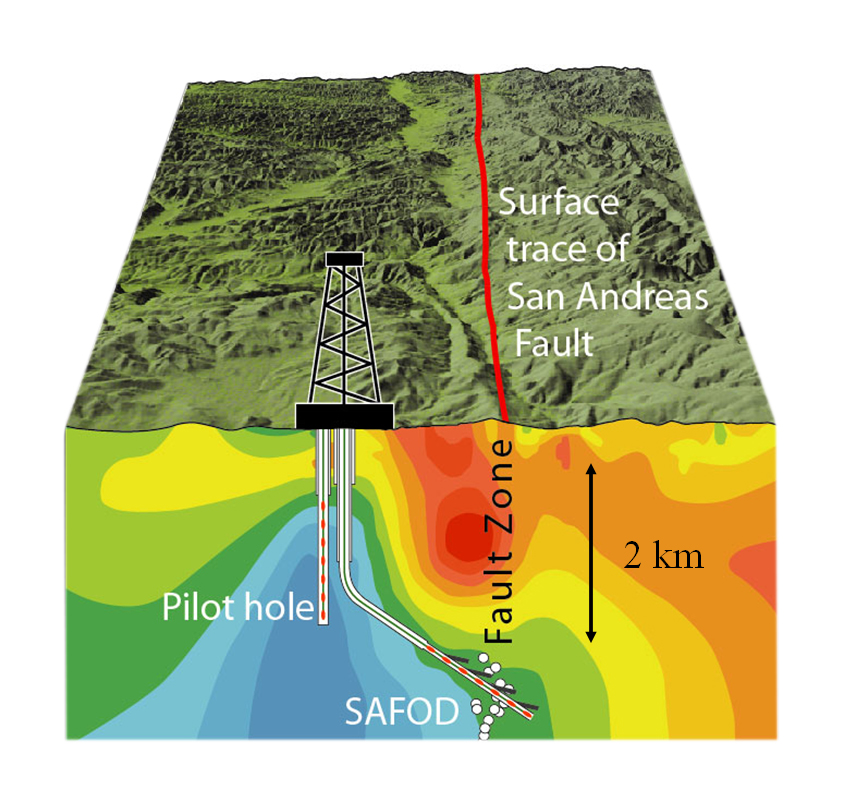
Fault Zone Technical Terms
Fault Zone: A fault that is expressed as a zone of numerous small fractures or of breccia or fault gouge. A fault zone may be as wide as hundreds of meters. Compare – fault, fault-scarp. GG
Remember Fen

Fen Technical Terms
Fen: Waterlogged, spongy ground containing alkaline decaying vegetation, characterized by reeds, that develops into peat. It sometimes occurs in sinkholes of karst regions. Compare - bog, marsh, swamp. GG
Expose Felsic Rock
Felsic Rock Technical Terms
Felsic Rock: A general term for igneous rock containing abundant, light-colored minerals (granite, etc); also applied to those minerals (quartz, feldspars, feldspathoids, muscovite) as a group. Compare - mafic rock. GG
Remember Fissure Vent

Fissure Vent Technical Terms
Fissure Vent: An opening in earth’s surface of a volcanic conduit in the form of a crack or fissure rather than a localized crater; a roughly linear crack or area along which lava, generally mafic and of low viscosity, wells up to the surface, usually without any explosive activity. The results can be an extensive lava plateau (e.g. Columbia River Plateau). Compare – crater [volcanic]. SW & GG
Remember First Bottom
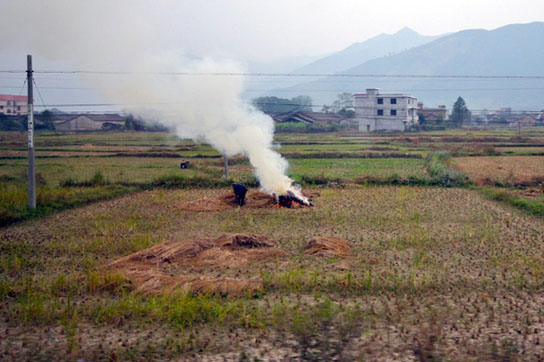
First Bottom Technical Terms
First Bottom: refer to flood-plain step. An obsolete, informal term loosely applied to the lowest flood-plain steps that experience regular flooding. However, the frequency of flooding is inconsistently specified. SW
Explain Finger Ridge

Finger Ridge Technical Terms
Finger Ridge: One in a group of small, tertiary spur ridges that form crudely palmate extensions of erosional remnants along the flanks or nose of larger ridges. Compare – ballena, rib. SW
Remember Filled Marshland

Filled Marshland Technical Terms
Filled Marshland: A subaerial soil area composed of fill materials (construction debris, dredged or pumped sandy or shell-rich sediments, etc.) deposited and smoothed to provide building sites and associated uses (e.g. lawns, driveways, parking lots). These fill materials are typically 0.5 to 3 m thick and have been deposited unconformably over natural soils. Compare – dredge spoil bank. SW
Explain Fill

Fill Technical Terms
Fill: (a) Human-constructed deposits of natural earth materials (e.g., soil, gravel, rock) and waste materials (e.g., tailings or spoil from dredging) used to fill a depression, to extend shore land into a body of water, or in building dams. (b) Soil or loose rock used to raise the surface level of low-lying land, such as an embankment to fill a hollow or ravine in roads construction. GG
Expose Drift

Drift Technical Terms
Drift: A general term applied to all mineral material (clay, silt, sand, gravel, boulders) transported by a glacier and deposited directly by or from the ice, or by running water emanating from a glacier. Drift includes unstratified material (till) that forms moraines, and stratified deposits that form outwash plains, eskers, kames, varves, and glaciofluvial sediments. The term is generally applied to Pleistocene glacial deposits in areas that no longer contain glaciers. GG
Explain Dropstone

Dropstone Technical Terms
Dropstone: An oversized stone (compared to the matrix sediments) in laminated sediment that depresses the underlying laminae and can be covered by “draped laminae”. Most dropstones originate through ice-rafting; another source is floating tree roots. Compare - erratic, ice-rafting. GG
Explain Drumlin

Drumlin Technical Terms
Drumlin: A low, smooth, elongated oval hill, mound, or ridge of compact till that has a core of bedrock or drift. It usually has a blunt nose facing the direction from which the ice approached and a gentler slope tapering in the other direction. The longest axis is parallel to the general direction of glacier flow. Drumlins are products of streamline (laminar) flow of glaciers, which molded the subglacial floor through a combination of erosion and deposition. Compare – drumlinoid ridge. SW, HP, & GG
Expose Drumlin Field

Drumlin Field Technical Terms
Drumlin Field: Groups or clusters of closely spaced drumlins or drumlinoid ridges, distributed more or less en echelon, and commonly separated by small, marshy tracts or depressions (interdrumlins). SW
Expose Drumlinoid Ridge

Drumlinoid Ridge Technical Terms
Drumlinoid Ridge: A rock drumlin or drift deposit whose form approaches but does not fully attain that of a classic drumlin, even though it seemingly results from similar processes of moving ice. Compare – drumlin, interdrumlin. SW & GG
Expose Dry Wash

Dry Wash Technical Terms
Dry Wash: A dry, ephemeral stream channel, especially in semiarid regions which only moves water in response to intense, infrequent precipitation. Compare - arroyo. SW

